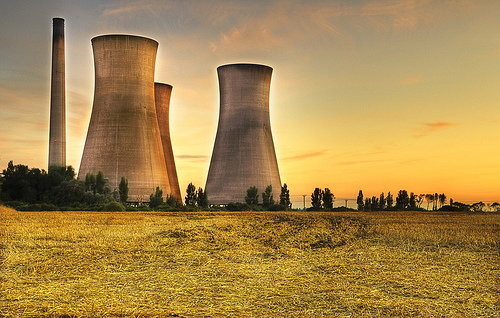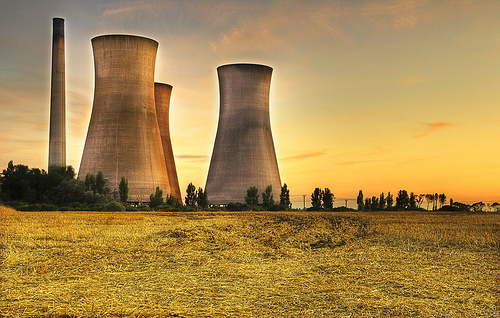 For coal, the real costs outweigh the benefits.Photo: Andrea AbbottPaul Epstein, associate director of the Harvard Center for Health and the Global Environment, will publish a study entitled, “Full cost accounting for the life cycle of coal,” later this month. The study has 10 coauthors, including public health and environment experts. A news release explains some of the key findings:
For coal, the real costs outweigh the benefits.Photo: Andrea AbbottPaul Epstein, associate director of the Harvard Center for Health and the Global Environment, will publish a study entitled, “Full cost accounting for the life cycle of coal,” later this month. The study has 10 coauthors, including public health and environment experts. A news release explains some of the key findings:
In a groundbreaking article to be released this month in the Annals of the New York Academy of Sciences, Dr. Paul Epstein, associate director of the Center for Health and the Global Environment at Harvard Medical School, details the economic, health and environmental costs associated with each stage in the life cycle of coal — extraction, transportation, processing, and combustion. These costs, between a third to over half a trillion dollars annually, are directly passed on to the public.
In terms of human health, the report estimates $74.6 billion a year in public health burdens in Appalachian communities, with a majority of the impact resulting from increased healthcare costs, injury and death. Emissions of air pollutants account for $187.5 billion, mercury impacts as high as $29.3 billion, and climate contributions from combustion between $61.7 and $205.8 billion. Heavy metal toxins and carcinogens released during processing pollute water and food sources and are linked to long-term health problems. Mining, transportation, and combustion of coal contribute to poor air quality and respiratory disease, while the risky nature of mining coal results in death and injury for workers.
We’ve known for a long time that coal is a costly and deadly energy source. In “The Toll from Coal,” The American Lung Association found that coal-powered electricity alone caused “over 13,000 premature deaths in 2010, as well as almost 10,000 hospitalizations and more than 20,000 heart attacks per year.”
The National Research Council found in 2009 that burning fossil fuels costs the U.S. $120 billion a year — not counting mercury or climate impacts! That relatively narrow analysis found that “in 2005 the total annual external damages from sulfur dioxide, nitrogen oxides, and particulate matter” from burning coal for power “were about $62 billion,” and averaged “about 3.2 cents for every kilowatt-hour (kWh) of energy produced.”
But we know that the harm from coal is much vaster, from global warming to local harm in Appalachia.
This new study attempts to quantify the full cost. It concluded:
The electricity derived from coal is an integral part of our daily lives. However, coal carries a heavy burden. The yearly and cumulative costs stemming from the aerosolized, solid, and water pollutants associated with the mining, processing, transport, and combustion of coal affect individuals, families, communities, ecological integrity, and the global climate. The economic implications go far beyond the prices we pay for electricity.
Our comprehensive review finds that the best estimate for the total economically quantifiable costs, based on a conservative weighting of many of the study findings, amount to some $345.3 billion, adding close to 17.8¢/kWh of electricity generated from coal. The low estimate is $175 billion, or over 9¢/kWh, while the true monetizable costs could be as much as the upper bounds of $523.3 billion, adding close to 26.89¢/kWh. These and the more difficult to quantify externalities are borne by the general public.
The average residential price of electricity is 12 cents per kWh.
The study notes that even these numbers are certainly underestimates of the full cost of coal:
Still these figures do not represent the full societal and environmental burden of coal. In quantifying the damages, we have omitted the impacts of toxic chemicals and heavy metals on ecological systems and diverse plants and animals; some ill-health endpoints (morbidity) aside from mortality related to air pollutants released through coal combustion that are still not captured; the direct risks and hazards posed by sludge, slurry, and CCW impoundments; the full contributions of nitrogen deposition to eutrophication of fresh and coastal sea water; the prolonged impacts of acid rain and acid mine drainage; many of the long-term impacts on the physical and mental health of those living in coal-field regions and nearby MTR sites; some of the health impacts and climate forcing due to increased tropospheric ozone formation; and the full assessment of impacts due to an increasingly unstable climate.
The true ecological and health costs of coal are thus far greater than the numbers suggest. Accounting for the many external costs over the life cycle for coal-derived electricity conservatively doubles to triples the price of coal per kWh of electricity generated.
The report also finds that carbon capture and storage (CCS) is a far less attractive strategy than many realize:
Our analysis also suggests that the proposed measure to address one of the emissions-CO2, via CCS-is costly and carries numerous health and environmental risks, which would be multiplied if CCS were deployed on a wide scale. The combination of new technologies and the “energy penalty” will, conservatively, almost double the costs to operate the utility plants. In addition, questions about the reserves of economically recoverable coal in the United States carry implications for future investments into coal-related infrastructure.
Public policies, including the Clean Air Act and NewSourcePerformanceReview, are inplace to help control these externalities; however, the actual impacts and damages remain substantial. These costs must be accounted for in formulating public policies and for guiding private sector practices, including project financing and insurance underwriting of coal-fired plants with and without CCS. [Emphasis mine.]
This is consistent with other recent research:
- Harvard: “Realistic” first-generation CCS costs a whopping $150 per ton of CO2 — 20 cents per kWh!
- Studyfind leaks from CO2 stored deep underground could contaminate drinking water
- Is coal with carbon capture and storage a core climate solution?
Epstein says:
The public is unfairly paying for the impacts of coal use. Accounting for these ‘hidden costs’ doubles to triples the price of electricity from coal per kWh, making wind, solar, and other renewable very economically competitive. Policymakers need to evaluate current energy options with these types of impacts in mind. Our reliance on fossil fuels is proving costly for society, negatively impacting our wallets and our quality of life.
Finally, the new study offers these recommendations:
- Comprehensive comparative analyses of life cycle costs of all electricity generation technologies and practices are needed to guide the development of future energy policies.
- Begin phasing out coal and phasing in cleanly powered smart grids, using place-appropriate alternative energy sources.
- A healthy energy future can include electric vehicles, plugged into cleanly powered smart grids; and healthy cities initiatives, including green buildings, roof-top gardens, public transport, and smart growth.
- Alternative industrial and farming policies are needed for coal-field regions, to support the manufacture and installation of solar, wind, small-scale hydro, and smart grid technologies. Rural electric co-ops can help in meeting consumer demands.
- We must end mountaintop-removal mining, reclaim all MTR sites and abandoned mine lands, and ensure that local water sources are safe for consumption.
- Funds are needed for clean enterprises, reclamation, and water treatment.
- Fund-generating methods include: maintaining revenues from the workers’ compensation coal tax;
b. increasing coal severance tax rates;
c. increasing fees on coal haul trucks and trains;
d. reforming the structure of credits and taxes to remove misaligned incentives;
e. reforming federal and state subsidies to incentivize clean technology infrastructure. - To transform our energy infrastructure, we must realign federal and state rules, regulations, and rewards to stimulate manufacturing of and markets for clean and efficient energy systems. Such a transformation would be beneficial for our health, for the environment, for sustained economic health, and would contribute to stabilizing the global climate.
Hear! Hear!



